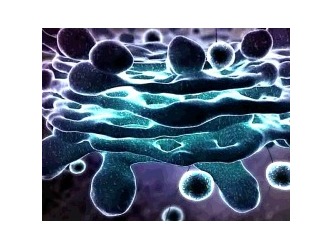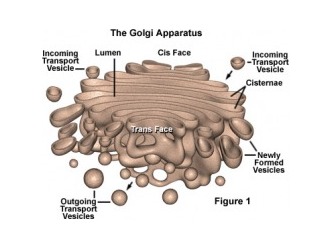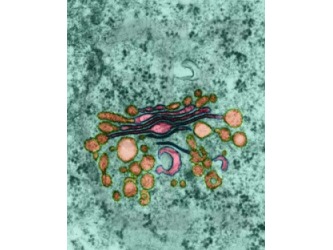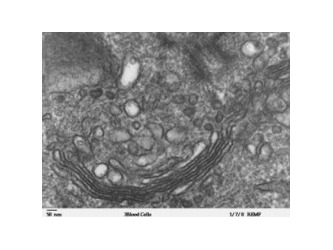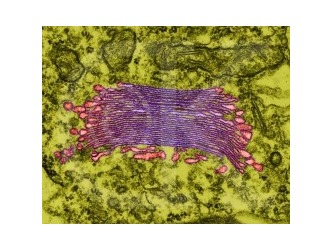Golgi Apparatus
Structure: Golgi apparatus is an organelle very important to a cell. It was named for Camillo Golgi. A Golgi apparatus usually has four to eight cisternae or flattened membrane sacks. The cisternae are usually stacked on top of each other. The sacks are connected internally by tubules, which are transport vesicles. The tubules fuse and bud off of a cisternae. The bud of cisternae and tubules make up a Golgi complex. The complexes are usually located near the nucleus. In some plants, the Golgi can be small and contain independent bodies of Golgi.
Function:The Golgi apparatus is distinctly oriented. It basically has a set of instructions to follow.
1. Transport vesicles bring new, synthesized product from the endoplasmic reticulum.
2. The vesicles transport their contents into the cisternae.
3. Special tubules, called anastomosing membrane tubules, attach to the cisternae on the cis, or entry face. This serves as a dock for transport vesicles.
4. The anastomosing membrane tubules cover the cisternae.
5. Vesicles carry chaperone proteins back to the endoplasmic reticulum.
6. Secretory products are taken to medial cisternae and are further processed.
7. Products are taken to the Trans to exit face.
8. The products are processed, sorted, and packaged into vesicles for the last time.
9. The vesicles will take the products to the cell membrane where they will either secrete or be taken to other organelles for storage.
In this process, complex oligosaccharides and glycoprotiens are synthesized and assembled. The glycoprotiens are assembled as they are moved through the many different steps of the Golgi apparatus. Assembling the glycolprotiens are chaperone proteins which have been directed to carry out this elaborate set of instructions.
